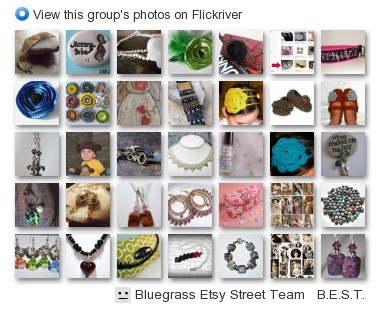Brick Stitch Basics
Weaving is a time consuming task--but it’s really simple. Essentially you are repeating the same motion over and over until you complete your design. In my journey with bead work I’ve focused on the brick stitch, right angle weave, herringbone stitch, and some netting. Once you get down the basics your imagination can fly.
In the next few paragraphs I am going to describe the brick stitch. The brick stitch causes the beads to lay like bricks due to the tension in the string.
But before delving straight into details of the stitch you’ll need some basic tools. Some items you will need to get from a specialty store or online. In Lexington there is an awesome bead store called Dandelion Beads. It is located at 209 Rosemont Garden. If you don’t live near or in Lexington I highly recommend finding the closest bead store near you. Bead stores are great, you are supporting local business and friendly people are there to help you and answer questions. Many stores will provide classes to help you on your beadings question. If you can’t find a store you can order everything you need online. A great sight is http://www.firemountaingems.com/ Here is a list of everything you should need.
supplies:
-beads
-beading needle
-string
-scissors
-bead board (optional)
A great bead to start with is a size 6-10 seed bead. In the future I will have an article all about the wonderful world of beads, but for now--if you are a beginner--I recommend starting with a larger seed bead, nothing larger than a 10. The higher the number the smaller the bead.
A beading needle is thinner, longer and more flexible than a traditional sewing needle. This makes it easier to finagle the string through the beads. In many cases, depending on the size of bead, the eye of a traditional needle will not go through the bead.. All of the needles I’ve ever bought come in a little paper pouch in a bundle. They break--it’s normal--you might go through a couple in a few weeks.
Are far as string goes there are brands of beadings strings. I’ve used beadings string for a long time. Recently, I was advised to use fishing line. It’s translucent and comes in varying strengths. I’ve been using it for several months with great results. FireLine is supposed to be a great brand. I’ve been using it with great results.
Scissors are fairly self-explanatory--you need to cut the string!
Lastly I recommend using a bead board, especially if you are working from your lap. It doesn’t have to be specifically made for beading. Any tray will work. Basically you don’t want to beads to roll all over the place before you weave them into your design.
Now you are ready to begin.
Most designs start with a basic base. In many cases the base is a string of beads or more commonly the ladder stitch. The ladder stitch is simple.
String 2 beads. Let’s call them A and B. After you string the two beads, go through bead A. Next go through bead B. Do this a couple of times. String another bead, bead “C”. After stringing bead C go through bead B. Then go though bead C again. Repeat this a few times. Going back and forth through the beads gives the design some strength. Also I don’t tie knots very well so I go back and forth through the beads until the string is locked in place. Some beaders glue their string. Some tie knots and glue the knots.
You will keep adding beads and looping them together until you get your desired width. The design is going to lift up from this base.
The second row begins the brick stitch. I have drawn some diagrams to help you follow the two basic steps of the brick stitch.
Step 1:
String two beads. Lets call them A and B. (At the start of every new row you will string two beads. After that you will work one bead in at a time until the next row.) Take the needle and slide it under the string that loops the last two beads in the ladder stitch together. (I think the diagram will really help here.) Next take the needle up through bead B. Pull the string tight.
String a 3rd bead, bead C. Take the needle and slip it under the string from the ladder stitch row. Go back up through bead C. Pull the string tight.
Repeat Step 2 until you reach the end of the row. At the beginning of a new row, start step 1 again.
And there you have it! That is the basics of the brick stitch. In a future article I will describe brick stitch variations. Good luck! Have fun exploring the possibilities of off-loom bead weaving.
Thanks so much Tabitha! This was a great tutorial! Now I wanna try it!


















2 comments:
neat! thanks for sharing tabitha!
Thanks for the tute!
Post a Comment